Blue-Fronted Amazon Parrtot
Original price was: $1,050.00.$900.00Current price is: $900.00.
Product Specification:</h2><ul class=”stats”>
- Size: 15 inches
- Lifespan: Blue-Fronted Amazon Lifespan is up to 60 years
- Bird Species: Amazon Parrot
- Colors: Green, blue,
- Sounds: Vocal, Loud, Mimics, Talkative, Singing
- Interaction: Social, Fun, Friendly, Cuddly, Affectionate, Playful
- Comparable Breeds: Yellow Crowned Amazon, Mealy Amazon
Blue-Fronted Amazon for Sale: The Perfect Companion Parrot
Overview
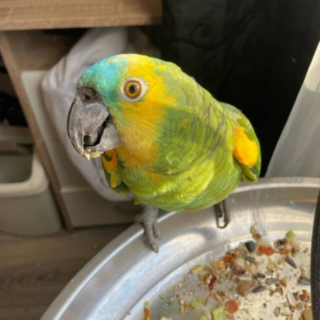
Explore the vibrant and intelligent Blue-fronted Amazon for sale. Known for its striking appearance and engaging personality, this parrot is a wonderful addition to any home, offering companionship, entertainment, and an interactive pet experience.
Blue-Fronted Amazon Appearance
Vivid Plumage
The blue-fronted Amazon parrot boasts a stunning array of colors. Its bright green body is accented by a distinctive blue patch on its forehead, along with splashes of yellow on its face and red on its shoulders, making it a truly eye-catching bird.
Medium Size
This parrot typically measures about 15 inches in length. Its well-proportioned body and colorful feathers make it a visually appealing pet that will surely stand out in any setting.
Blue-Fronted Amazon More Information
Introduction
The Blue-Fronted Amazon The parrot is a popular and strikingly beautiful bird known for its vivid green plumage and distinctive blue markings on its forehead. These intelligent and social parrots make wonderful pets for the right owners. This guide provides an in-depth look at the blue-fronted Amazon, covering their natural habitat, physical characteristics, behavior, diet, care requirements, and conservation status.
Natural Habitat
Geographic Range
Blue-Fronted Amazon parrots are native to South America, primarily found in countries like Brazil, Paraguay, Bolivia, and Argentina. They inhabit a variety of ecosystems, including forests, woodlands, and savannas.
Climate and Environment
These parrots thrive in tropical and subtropical climates. They are often seen in areas with abundant vegetation, which provides both food and shelter. Their adaptability allows them to live in a range of environments, from dense forests to open plains.
Blue-Fronted Amazon Physical Characteristics
Appearance
Blue-fronted Amazons are easily recognizable by their bright green feathers, with a patch of blue on their forehead and yellow markings on their face and crown. Some individuals also have red patches on their shoulders. Their vivid coloration makes them one of the most attractive Amazon parrot species.
Size and Weight
These parrots are medium-sized, typically measuring between 14 and 15 inches in length. They weigh around 11 to 15 ounces, with males generally being slightly larger than females.
Behavior and Temperament
Social Behavior
Blue-fronted Amazons are highly social and enjoy interacting with their human companions. They are known for their playful and affectionate nature. In the wild, they live in flocks, which helps them stay safe from predators and find food more efficiently.
Vocalizations
These parrots are excellent mimics and can learn to speak a wide variety of words and phrases. They are also known for their loud, boisterous calls, which they use to communicate with each other. Their vocal abilities and playful nature make them entertaining pets.
Diet and Nutrition
Wild Diet
In the wild, Blue-Fronted Amazons feed on a diverse diet of fruits, seeds, nuts, berries, and vegetation. They use their strong beaks to crack open hard shells and access the nutritious contents inside.
Captive Diet
A well-balanced diet for a captive blue-fronted Amazon should include high-quality pellets, fresh fruits and vegetables, and a variety of nuts and seeds.
- Avoid foods that are toxic to parrots, such as chocolate, caffeine, avocado, and alcohol.
- Providing a mix of textures and flavors keeps them mentally and physically stimulated.
Lifespan and Health
Common Health Issues
Blue-fronted Amazons can be prone to health problems such as
- Obesity (caused by an improper diet or lack of exercise)
- Respiratory infections (often due to poor air quality or lack of hygiene)
- Psittacine Beak and Feather Disease (PBFD), a viral condition affecting their feathers and immune system.
Regular veterinary checkups, a balanced diet, and a clean living environment are essential for maintaining their health.
Lifespan in the Wild vs. Captivity
In the wild, blue-fronted Amazons typically live around 20 to 30 years. In captivity, with proper care, they can live up to 50 years or more, making them a long-term commitment for any potential owner.
Breeding and Reproduction
Breeding Season
The breeding season for Blue-Fronted Amazons usually occurs during the spring and early summer. They prefer to nest in tree cavities, where the female lays 2 to 4 eggs and incubates them for about 26 to 28 days.
Nesting Habits
Both parents are involved in feeding and caring for the chicks once they hatch. The young birds fledge about 8 to 10 weeks after hatching but remain dependent on their parents for a few more months.
Blue-Fronted Amazons as Pets
Pros and Cons
✅ Affectionate and highly intelligent
✅ Excellent at mimicking human speech
✅ Long lifespan, providing years of companionship
❌ Can be loud, which may not be suitable for apartments
❌ Requires a high level of care, attention, and mental stimulation
Care Requirements
These parrots need:
- A spacious cage or aviary
- Plenty of mental and physical stimulation
- Regular interaction with their owners
- A variety of toys, perches, and climbing opportunities to keep them engaged and happy.
Training and Enrichment
Basic Training Tips
Training a blue-fronted Amazon requires patience and consistency.
- Start with basic commands like “step up” and “step down.”
- Use positive reinforcement techniques such as treats and praise
- Socializing them with different people and environments helps reduce anxiety and prevent behavioral problems
Enrichment Activities
Providing a variety of activities is essential for these intelligent birds:
- Foraging toys
- Puzzle feeders
- Interactive playtime
- Regular out-of-cage time for physical and emotional well-being
Conservation Status
Threats to Survival
Blue-Fronted Amazons face threats from habitat loss due to deforestation and the illegal pet trade. Their populations have declined in some areas, making conservation efforts crucial for their survival.
Conservation Efforts
Various organizations work to protect these birds through habitat preservation, anti-poaching measures, and breeding programs. Supporting these efforts is vital for the survival of the species and maintaining their natural populations.
Blue-Fronted Amazon Conclusion
The blue-fronted Amazon parrot is a beautiful, intelligent, and affectionate bird that makes a wonderful companion for the right owner. Understanding their needs, behavior, and care requirements is essential for providing them with a happy and healthy life. By ensuring proper care and supporting conservation initiatives, we can help protect these remarkable birds for future generations.
Blue-Fronted Amazon FAQs
What is the average lifespan of a blue-fronted Amazon parrot?
In captivity, with proper care, they can live up to 50 years or more, while in the wild, they typically live around 20 to 30 years.
Are blue-fronted Amazons good pets?
Yes, they can be wonderful pets due to their affectionate and playful nature, but they require a significant time commitment and care.
What do blue-fronted Amazons eat?
Their diet includes high-quality pellets, fresh fruits, vegetables, nuts, and seeds. In the wild, they feed on fruits, seeds, nuts, berries, and vegetation.
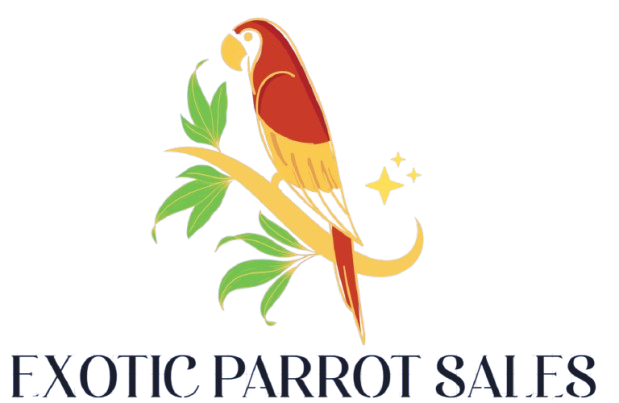
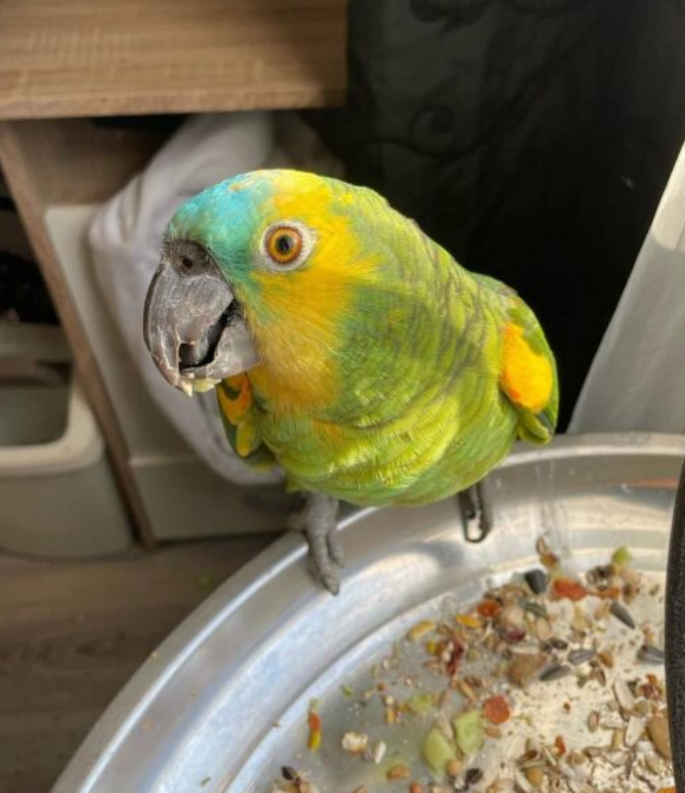
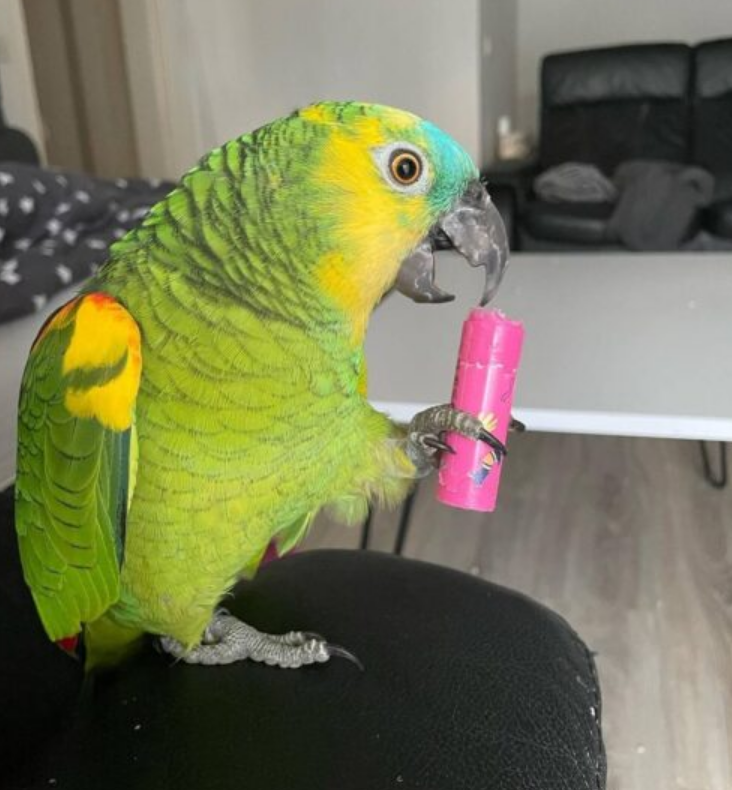
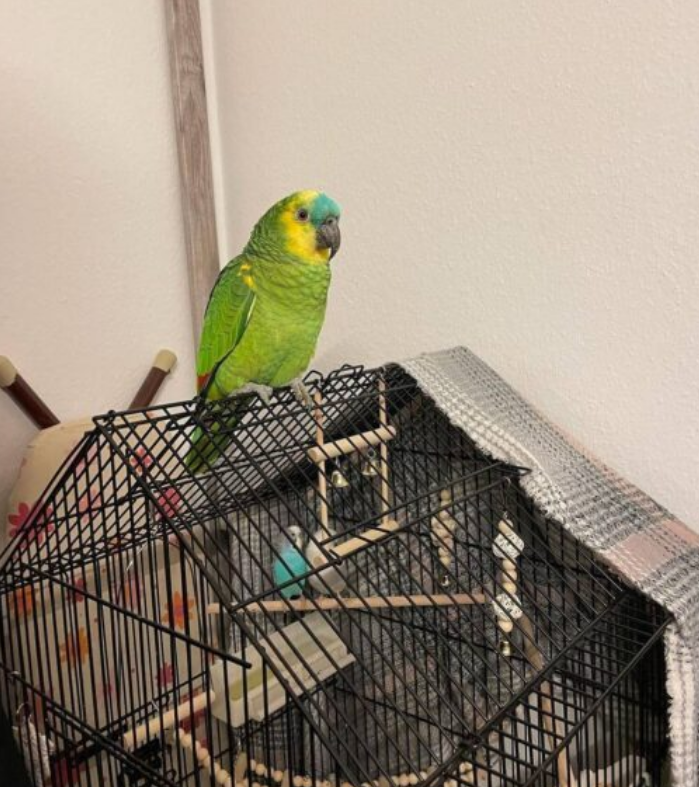
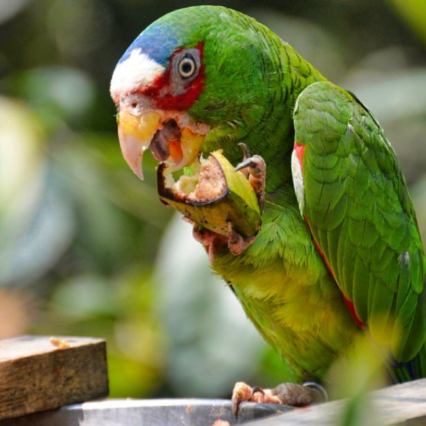


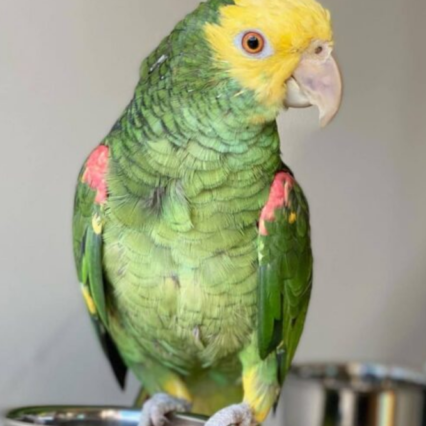
Reviews
There are no reviews yet.